Read First: Swimming With Whale Sharks In Oslob 2024
Read First: Swimming With Whale Sharks In Oslob 2024
As a diver, there are three things I’ve really wanted to see underwater and somehow all of them have eluded me until now. Number 3 is the pygmy seahorse. They are about the size of a quarter and hide really well – too well. Number 2 is the mola mola. The oceanic sunfish is a really weird looking fish about the size of a house.
At the top of the list is the majestic whale shark. This shark (not a whale), can get to as big as a really really big bus and are simply a sight to behold. Or so I was told by all the lucky divers who had managed to see one before me.
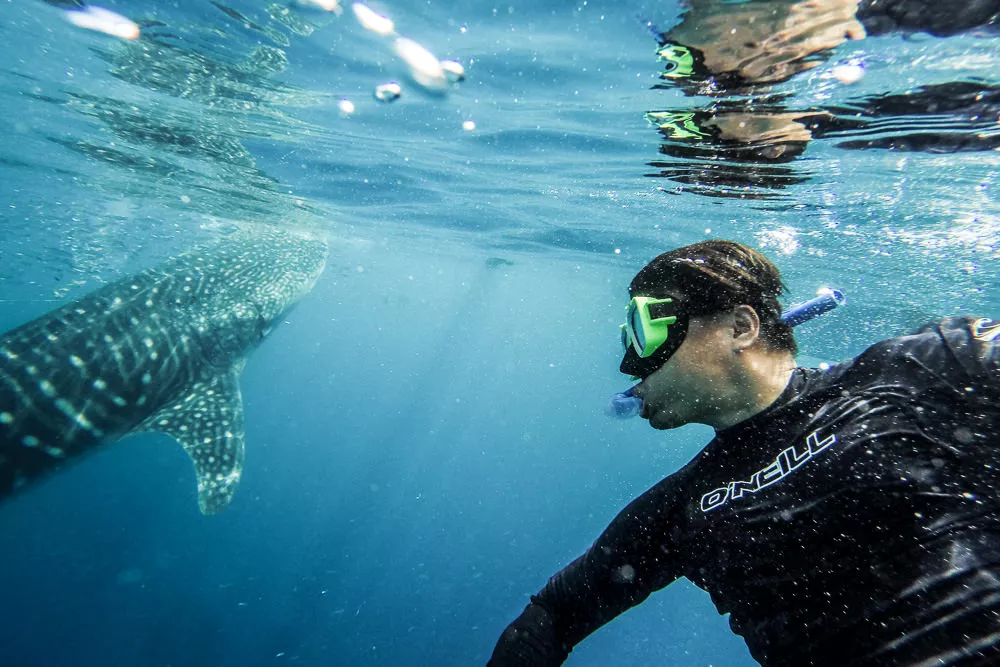
There’s just something about swimming with a creature the size of a bus that feels out of this world.
My plan, after free diving with the golden jellyfish in Palau, was to head to the Philippine Islands and try to catch the butanding at the start of their annual migration season (November – June). The three main areas with a higher likelihood of encountering them are Donsol, Oslob, and Lila.
Donsol or Oslob or Lila For The Whale Sharks?
This is probably the question that brought you here, so here is the short answer. At Oslob, you are pretty much guaranteed to see the whale sharks most days of the year. Lila is a new spot in Bohol that offers a similar experience to Oslob. In Donsol, there’s a season, the sightings are not guaranteed, and it is much more expensive. Seems like a pretty easy decision to make, but it’s not quite so.
In Oslob, there’s about ten to fifteen whale sharks that are always there just about 150 meters from the shoreline. They are here, because the local fishermen chum the waters and feed the whales harks. There’s a general consensus that the experience is a bit unethical because they are changing the migratory habits of the whale sharks with the daily feedings. It’s something to be aware of ahead of times.
In Lila, fishermen caught on to the migratory patterns of the whale sharks and began luring them in with the same feeding tactics used in Oslob. The feeding is done only in the mornings. Lila doesn’t have the name recognition as Oslob nor the crowd. I’ve yet to visit Lila, as it’s one of the newer attractions in Bohol, but I can relay some basic information.
In Donsol, you go on private boats with spotters and jump in only when you find them. In season, they say there’s a good chance you’ll see them, but it’s not a guarantee. Seeing them in Donsol is akin to meeting them in the wild, while Oslob is more like a petting zoo. Still, I recommend you read on and make a decision for yourself.
You can skip ahead to read about the Oslob whale shark experience if you have no plans to visit Donsol.
The Ethics Of Swimming With Whale Sharks
I would be remiss to talk about swimming with whale sharks without mentioning the ethical debate of this practice. Swimming with whale sharks is a relatively new attraction in the Philippines. It was only in 2011 that a local fishermen in Oslob discovered he could lure away the whale sharks, then considered an annoyance for fishermen, with baby shrimp bait. A dive center soon after requested he lure them to a whale-watching site. Word spread that you can swim with the these giants and Oslob became a destination for visitors to the Philippines. More fishermen began baiting the waters and more whale sharks would return each day.
Disrupted Migration Patterns
Whale sharks travel great distances on an annual migratory pattern following the movement of their primary food source, plankton. In places like Oslob and Lila, the season is usually only about two months. However, with the daily feeding, whale sharks often stay longer instead of moving on, potentially disrupting their breeding patterns and cycles in the long run.
Human Interaction and Injuries
While there are rules warning visitors to keep a certain distance away from the whale sharks, people tend to break the rules to get photos or to touch these slow moving creatures for themselves. Moreover, the feedings have led whale sharks to approach boats rather than to avoid them. They will often bump or rub against the boat to get to the food, causing injuries and lesions to their body.
When the whale sharks approach too closely to the boats, feeders will sometimes use their feet or the oars to push them away from the hull, also causing damage from the repeated abrasion. It’s been observed that new sharks will arrive without any injuries, and will sustain them within a week. The developed behavior of approaching boats puts them in danger when they migrate out to other areas and approach boats that have propellers.
Spotting Them In The Wild
In places like Donsol, visitors join boats in search of whale sharks on their migratory path. There’s no feeding here, so it’s more like finding them in the wild. Once they are spotted, guests can jump in to swim with them under the watch of a whale shark interactions officer. The practice here is arguably more ethical, but ultimately, we’re not really meant to be interacting with the whale sharks at all.
Is Donsol Still Worth Visiting?
The first time I had plans for Donsol was in 2015. Back then, sightings of the whale sharks were a regular occurrence, so much so that the gentle giants turned this sleepy village into a proper destination. The average daily sightings were around 10-12 sharks.
The sustainable and local ecotourism was also something that I very much wanted to support. Unfortunately, my plans were derailed by weather.
Over the years, the number of sightings have dropped dramatically, impacted by typhoons, overfishing, and other environmental changes that have diverted the migratory patterns of the whale sharks. In 2024, the sightings have dropped to around 1-2 of whale sharks every few days, and that’s really only in the absolute peak months.
Sightings Down, Prices Up In Donsol
When I went there in January, two months into the season, 1-2 sharks were supposedly seen every few days. My own experience was less successful. We spent 3 hours in the morning searching and hoping, and returned with disappointment. I don’t blame the spotters, knowing that they tried their best.
What I didn’t like as much was the feeling that they oversold optimism. It never felt like I could get a straightforward answer. From the dive shops to the Interaction Center, everyone said the same thing: it’s not guaranteed, but it’s possible and that they had just seen one recently. After all, whale shark tourism is their livelihood so what else would they say.
On the sightings board at the Whale Shark tourism center, guests left their sightings and reactions. They were all positive and the dates were recent. Unfortunately, over 3 days, I noticed, they just kept the “reviews” the same and updated the dates. Right up until I got on the boat, I did not have much confidence in anyone’s words and was very apprehensive about spending the money.
Can You Share A Boat To See The Whale Sharks In Donsol?
To see the whale sharks in Donsol, you will have to rent a boat that includes the boatmen and the BIO (Butanding Interaction Officer), who is responsible for spotting the whale sharks and enforcing the interaction rules. The boat costs 5000 php for a roughly 3-4 hour trip and there’s an additional 300 php environmental fee per person (100 php for locals). Each boat can accommodate up to 6 guests.
This is a relatively recent increase from 3500 php per boat. When I inquired in 2015, it was around 1700 php. Sadly, as sightings have dropped, prices have also increased.
TIP: You can also rent masks, snorkels and fins, but I strongly recommend bringing your own. The quality of the equipment here and around the Philippines for these types of snorkeling and boat trips are horrendous. I always carry this ridiculously cheap, but amazing mask and Cressi snorkel with the splash guard to prevent water from getting in.
The thing is, unless you arrive with other guests or at the same time as others, it’s unlikely that you will be able to share a boat. When my friend and I asked if there were other people joining, they said the other guests had left already. We asked if we could wait for others to join and they tried to convince us that it was important to leave early or else we would have a lower chance of seeing the sharks. You can call it scare tactics if you want, and it wasn’t the first time we heard something similar in Donsol and other places in the Philippines.
We ultimately paid for the whole boat and set off.
No Whale Sharks Today
There’s not much to say other than that we had a nice morning on the water, but saw nothing. I got the sense that everyone more or less knew the outcome for that morning, but just carried on because it’s how they make a living. They were hoping to spot the evermore elusive butanding in the same way we did.
When To Visit Donsol
My sense is that Donsol is trying to still trying to live off its old reputation as the place to see whale sharks in the wild. While that is technically still true, I cannot recommend it myself. With fewer visitors, it seems that they need to increase the prices to make up for it. You’re most likely you’re going to be paying for the whole boat yourself.
If you still want to visit the town, do so without an expectations of seeing the whale sharks. From talking to the dive shops, the peak months are around March and April. Let’s move on and talk about Oslob.
How Much Are Tickets To Swim With Whale Sharks In Lila?
Lila is similar to Oslob in that the local fishermen have learned to lure the whale sharks in with food as they pass on their migration. While it is currently less crowded than Oslob, it’s only a matter of time for word to spread. I spoke with a couple of dive shops and they are hoping that with the fewer visitors, they can continue to better enforce the interaction rules to differentiate themselves from Oslob.
Entrance to swim with the whale sharks in Lila are 1500 php per person and include goggles and snorkel. Fins are not allowed.
The Oslob Whale Shark Experience
Unlike Donsol, I planned my visit to Oslob knowing full well that it would be like visiting a zoo. The whale sharks gather in the same area every morning and stay until the feeding is done around noon. It wasn’t the ideal way to see the butanding, but I wanted to experience Oslob myself before passing judgement. Trips from Cebu City or Moalboal usually start at 3 am to arrive at around 5 to 6 am. The earlier you get there, the less you have to wait before it’s your turn.
RESPECT THE WHALE SHARKS
Rule #1: No sunscreen. That stuff comes off in the water and is harmful to the whale sharks and all other sea life.
Rule #2: Stay 3 meters away. Try. It’s hard, but try.
Rule #3: Don’t touch them as tempting as it is. This should be obvious.
What Time To Arrive At Oslob
As soon as we arrived, I headed towards the ticket office and lined up to pay the fee: 500 pesos for locals and 1000 pesos for foreigners. I jokingly tried to pretend I was Filipino and even belted out a few lines from Celine Dion’s “It’s All Coming Back To Me Now” to prove it, but they still charged me 1000 pesos.
Update: Since the pandemic, the price to swim with the whale sharks is now 500 pesos for both locals and foreigners.
IMPORTANT: The lines start well before the Whale Shark Center opens at 6 am. Plan to arrive no later than 5 am to avoid waiting for more than 3 hours. Oslob has gotten that popular. You can get a numbered ticket and return at a later time. I personally recommend staying in Oslob to avoid having to drive the 3-4 hours from Moalboal or Cebu City that early in the morning. The place only runs until noon, so if you arrive later in the day, you risk not getting a spot.
When it’s your turn to join the organized chaos, the process is like clockwork. There are buckets with masks and snorkels, and a rack of life jackets. Even though the masks and snorkel are included in the fee, I strongly recommend bringing your own. I traveled to the Philippines with this bargain-priced mask that never fogged up.
There’s a short briefing going over the rules for interacting with the whale sharks. It’s really important to not touch or chase the whale sharks. Even if you see other tourists breaking the rules, please try to observe them yourself.
From there, I was put on an outrigger with 8 other people. It felt like a meat packing factory, but at least they were efficient. Within minutes, we were cutting through the water and heading towards the mass of other boats.
In The Water With The Whale Sharks
PHOTOGRAPHER’S TIP: I suggest a wide lens with a focal length between 16mm and 24mm. You will be able to get pretty close to the whale sharks (but stay at least 3 feet away still), so a wider lens will allow you to get more of this massive creature in your frame.
With my camera in hand, I gently entered the water head first as soon as the guide pointed out the first whale shark. In the excitement, I hadn’t even put on my mask. When I finally did and caught my breath, I lost it again as one of these beautiful spotted creatures swam within a few feet in front of me. I estimated it to be about 20 feet in length, massive, but pretty much a baby compared to how big they can get.
Don’t Get Hit By A Whaleshark
When I settled my heart rate enough to free dive down, I had a beautiful and up close view of the shark from the side and below. They were even more beautiful in motion than any photograph could capture because of the way light reflected off their spotted bodies.
As I was surfacing, eyes still on the whale shark that was now swimming away, I felt an enormous mass move right above my head. Instinctively, I held my breath and tried to pushed upwards to halt my momentum. It was enough to slow me down and let the bulk pass by, but not before a part of its massive tail swiped at me when I thought I was already in the clear
ETIQUETTE: If you’re going to do this, be mindful with where you kick your legs. They no longer allow fins to help minimize any the damage to the whale sharks.
It’s Just Too Crowded
After that initial excitement, I saw it. A bunch of limbs flailing from just off the boats, head above water and completely oblivious to what they were doing. Between the whale sharks swimming blindly towards the food and the crowds of tourists, there was not a whole lot of open space. What I heard about this place was pretty accurate. It’s no wonder they don’t allow fins, or there would be so many more injuries to the whale sharks from careless visitors.
There was also an urgency about the whole thing because we only had about 20-30 minutes in the water. I did not want to waste a second of it looking at anything other than the whale sharks swimming about me. It was incredible how close I was able to get to the whale shark and how often I had to actually swim out of the way. I really can’t imagine having this many passes if I were to see one in the wild.
As Close As You Can Get
That was perhaps the one advantage I saw of seeing them in Oslob like this. The proximity allowed you to marvel at the mesmerizing pattern on their bodies and get a sense for how large they are. The downside was that up close, I also saw some of the damage and injury that probably sustained from this type of interaction and it made me feel a little guilty.
When the guide said it was time to come in, I took one more deep breath, dived underneath the closest whale shark, and stayed for as long as I could. I even closed my eyes to try to remember the moment. And like that, it was over.
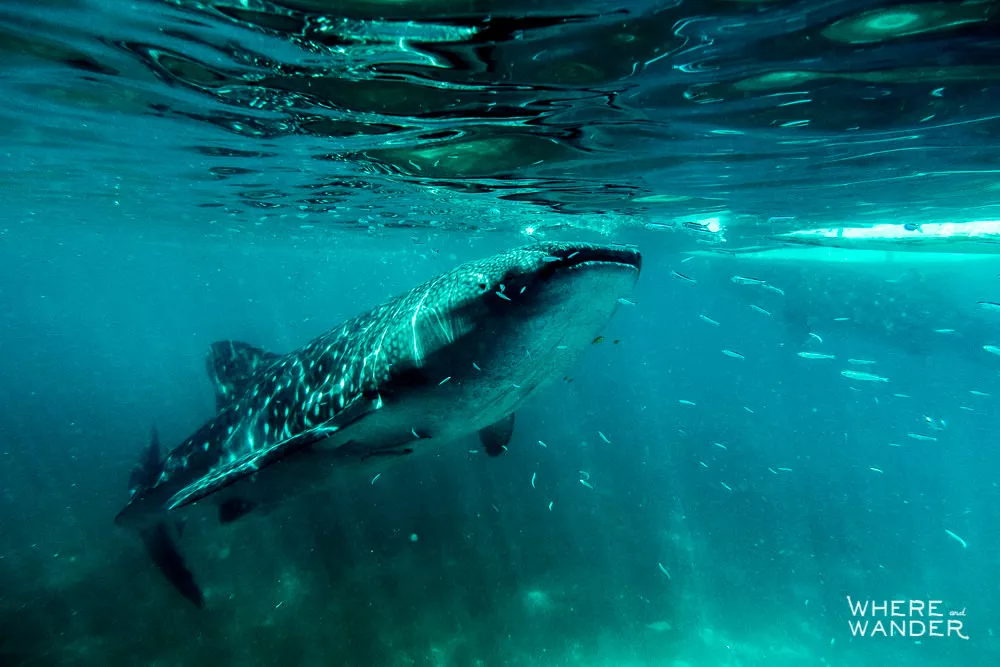
On the ride back, I mentally checked “Swim with Whale Sharks” off my bucket list, but put a little asterisk next to it. For many and most, this would have been enough to even spot them from inside the boat. I wanted to see them again, under better circumstances. If this means having to fly to Indonesia, Mexico, Bonaire or South Africa to do it, I’m not going to complain.
Is Oslob Worth Staying At?
There may not be as much going on at Tan-awan Beach in Oslob besides the whale sharks. That said, most tours leaving from Cebu City or Moalboal will start really early at around 3 am. Some leave even earlier now to every group tries to beat the other to the line. I visited during a time where the lines were not so bad, but that’s not the case anymore.
I highly recommend spending the night before in oslob and be one of the first in line to get a number.
If you happen to get later number, you can always return to your hotel and have breakfast. Casa Bonita is walking distance to the Whale Shark center at Tan-awan Beach. It’s about 10 km or a 15 minute drive from the Oslob town proper.
I advised this strategy to friends and they chose to stay in Oslob town where there were better options. They highly recommended their stay at Pobla Hotel.
When I visited the second time with another friend, we stayed 3 nights at the amazing Emoha Dive Resort near Lillian Port to dive and relax before taking the ferry to Siquijor. It was about 12 km away and an easy 20 minute tricycle ride in the morning to get to the whale watching center. If you’re traveling down from Moalboal and onwards to Siquijor or Dumaguette, I would strongly advise this option.
Can You Scuba Dive With The Whale Sharks?
In the past, you could not scuba dive with the whale sharks at Oslob. In recent years, they’ve changed that policy and now dive schools can take you down under.
The benefit to scuba diving is that you avoid the long line for the boats altogether. This could save you hours. The downside is the cost and the fact that you’re mostly under the whale sharks since they’re much closer to the surface to feed.
Photography Tips For Shooting The Whale Sharks
To photograph the whale sharks, I carried two underwater cameras: The RX100 IV in the Nauticam Underwater Housing is my main underwater camera rig. The compact point and shoot has a 24-70mm f/1.8 – 2.8 lens with a 1” sensor.
I can shoot at the wide end to capture the size and scale of the whale sharks and zoom in to get the details on their body. The zoom also allows me to get closer to the whale shark while still obeying the distance rule.
I also carry a GoPro on a selfie stick to get shots of myself with the whale sharks. The ultra wide lens on the GoPro along with the extendable selfie stick allows me to get myself in the frame without worrying about perfect composition.
Getting To Oslob
Oslob is a coastal town that is located at the southern end of Cebu. As such, there are a few places that are within a few hours transport to Oslob. Expect to drive, hire a taxi, or join a shared group tour to get to Tan-awan in Oslob.
Personally, I strongly recommend against driving or taking a motorbike on your own if you’re traveling in the middle of the night to arrive in the morning. This can be quite dangerous with the other drivers speeding through the narrow roads that they’re used to.
From Cebu City
It takes about 4 hours to drive from Cebu City to Tan-awan, Oslob. There are cheap shared group tours that leave between 1 and 3 am. I personally think it’s too long of a day to justify the whale shark experience on its own. If you’re not visiting any other places on Cebu, I would consider combining the visit to Oslob with Kawasan Falls canyoneering adventure or the Sardine Run at Moalboal before returning to Cebu. It’s a grand loop and a long day, but at least you’ll see the highlights of Cebu.
From Moalboal
It takes about 2 hours to drive from Moalboal to Tan-awan, Oslob. There are many tours offered from Moalboal that leaves around 3 am and gets you there by 5 am. This is a much better option than from Cebu City.
From Liloan Port
It takes about 15 minutes to drive from Liloan Port to Tan-awan Oslob. I recommend this option as a base because you can combine your whale shark experience with incredible diving, a visit to the nearby Aguinuid Falls, and take the ferry afterwards to Siquijor or Dumaguette.
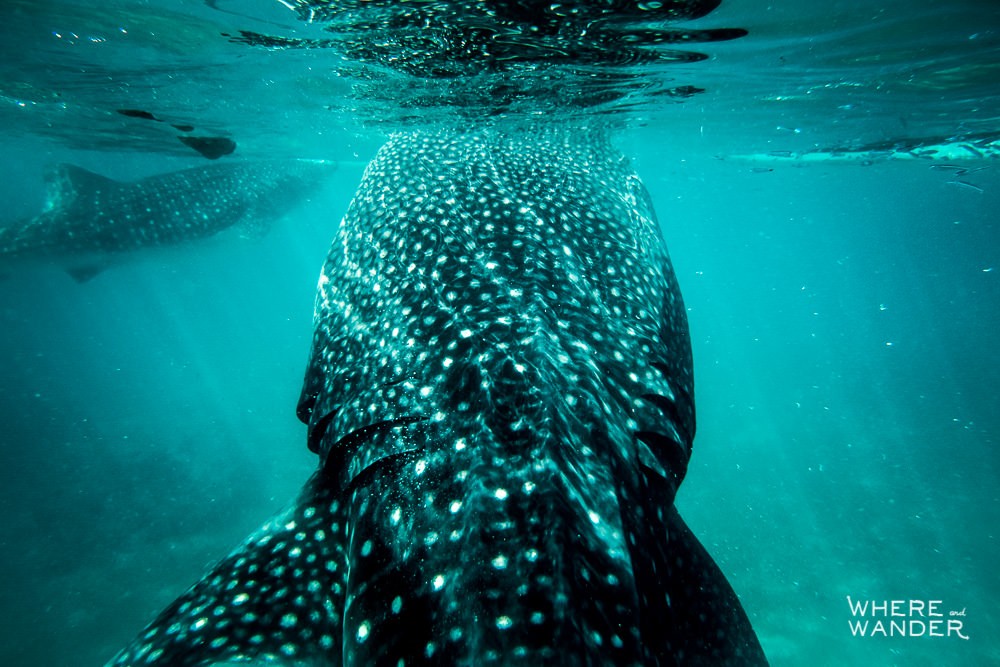
Looking for more travel inspirations? Scroll through some of the 450+ experiences on my bucket list. Maybe you’ll find your next adventure on there.
How You Can Help
If you’ve found the content useful, you can help support this site by using these links when you plan and book your trip.
| Booking.com | Agoda.com |
| Amazon.com | Klook.com |
| Viator.com | GetYourGuide.com |
.
Updated on June 26, 2024


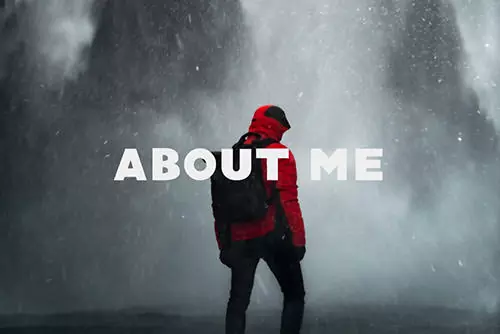
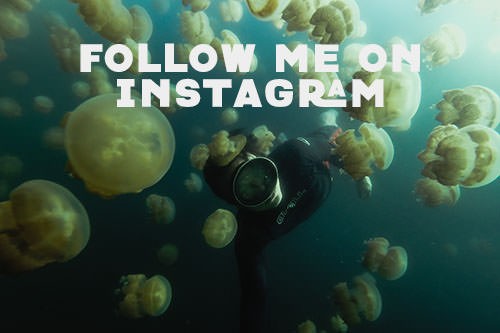
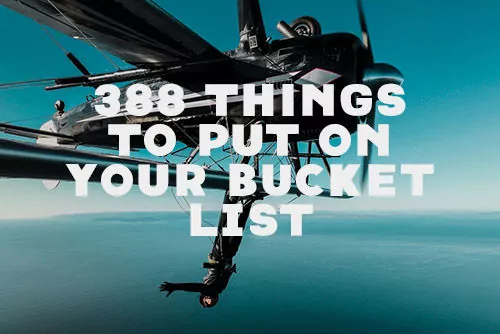
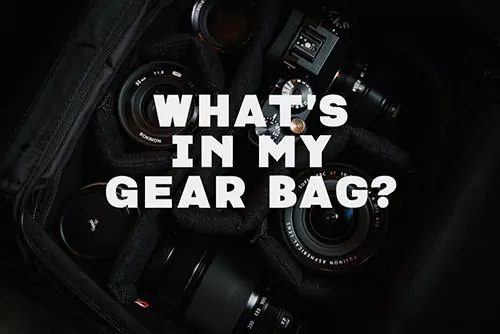
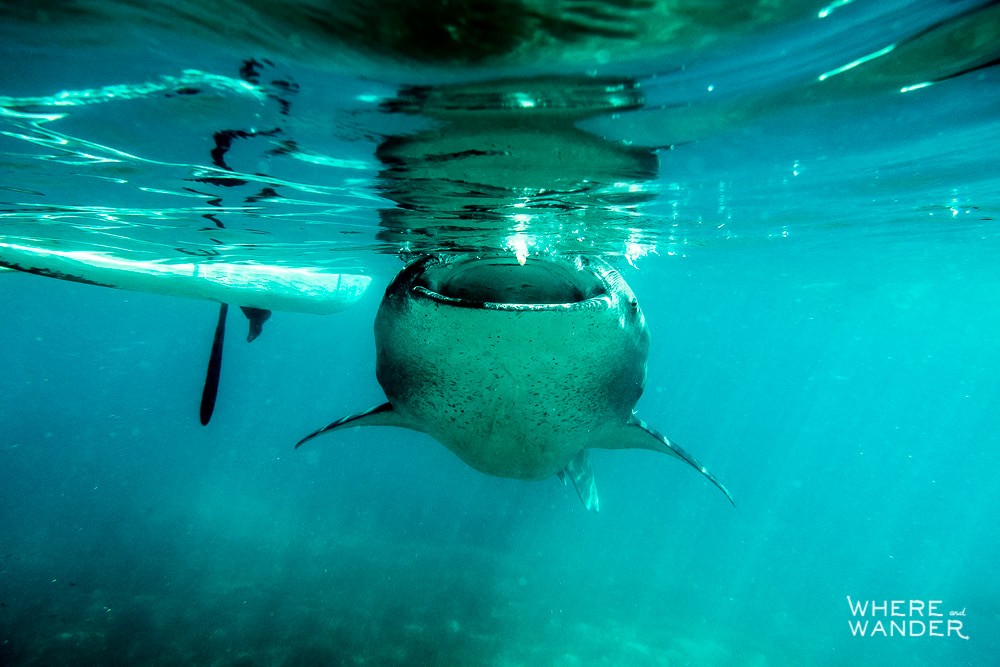

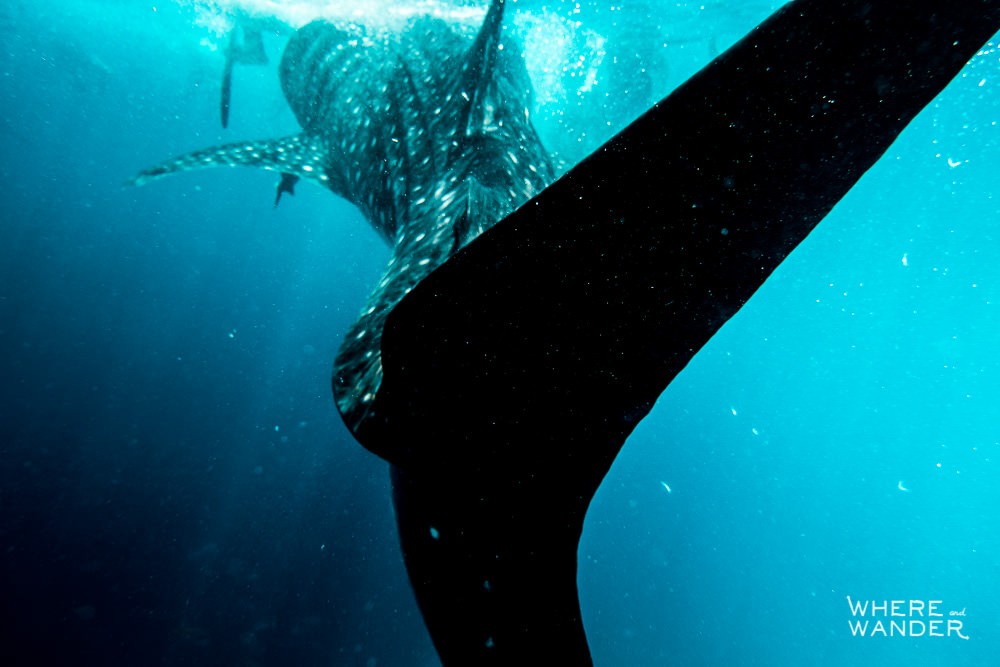
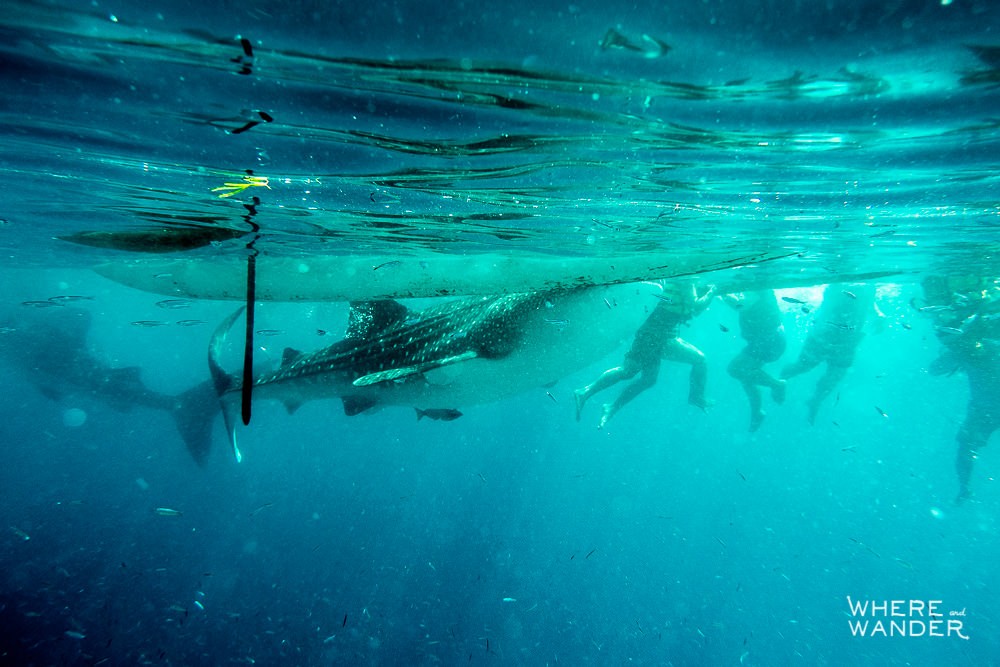
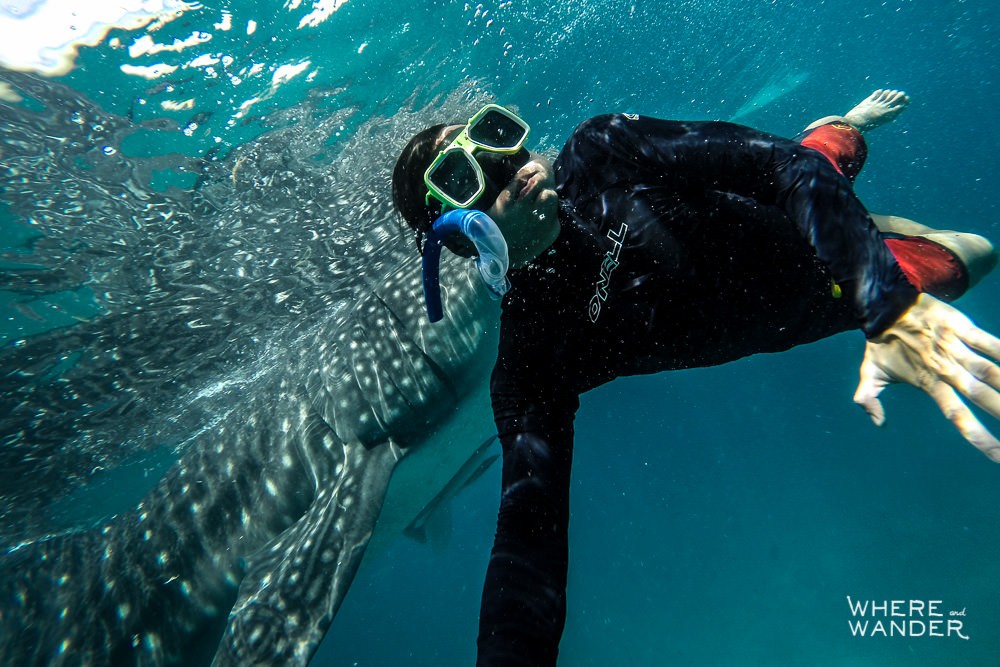
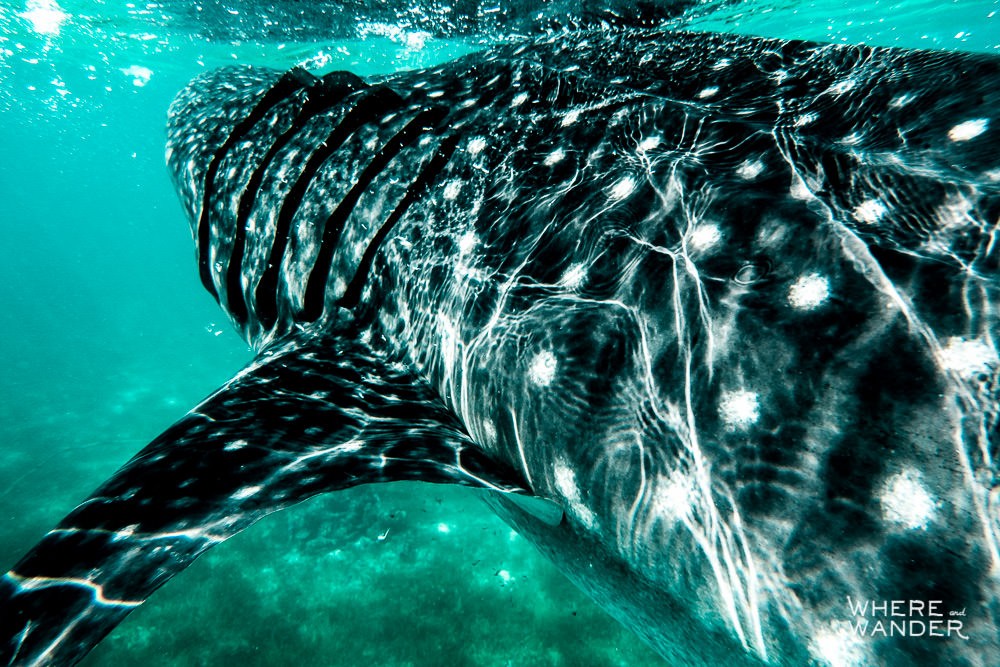
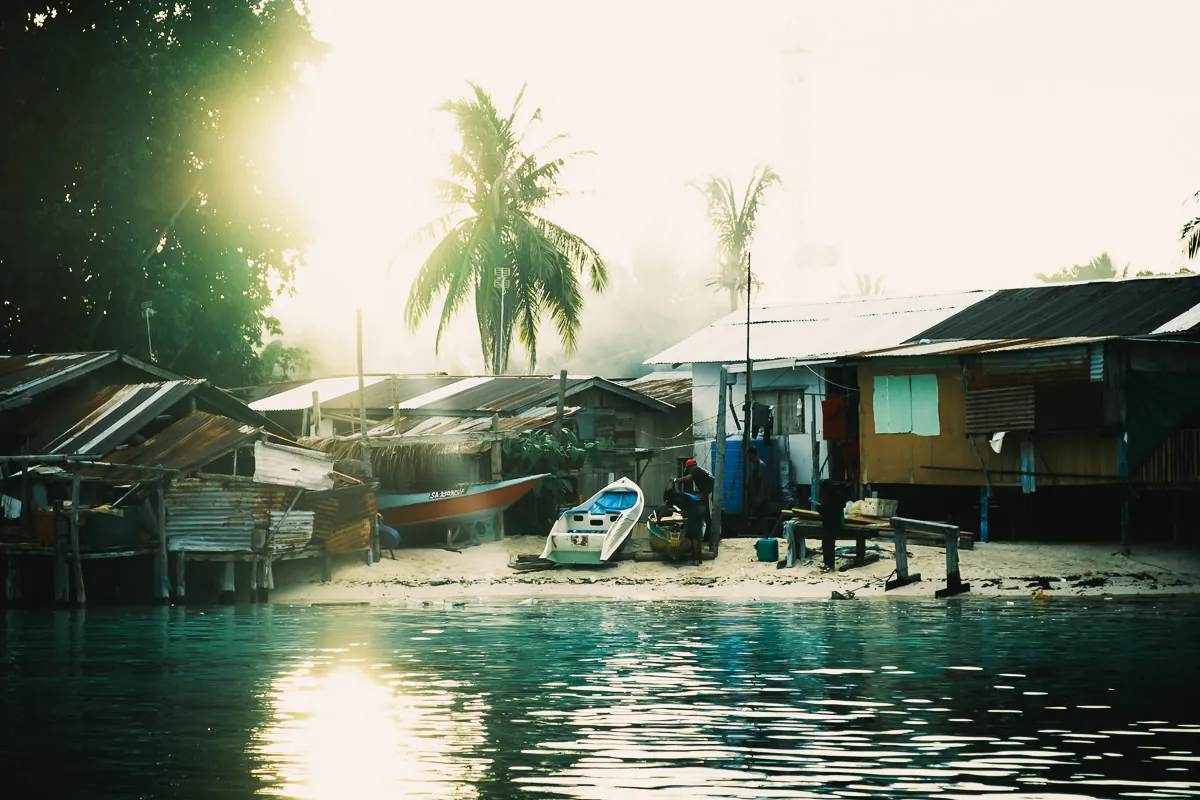
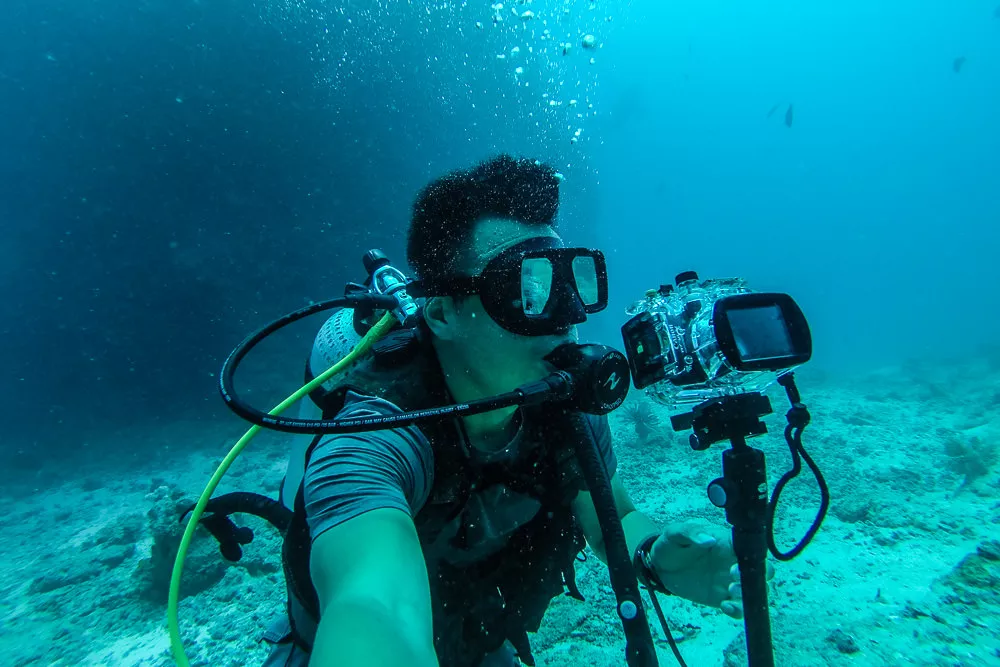
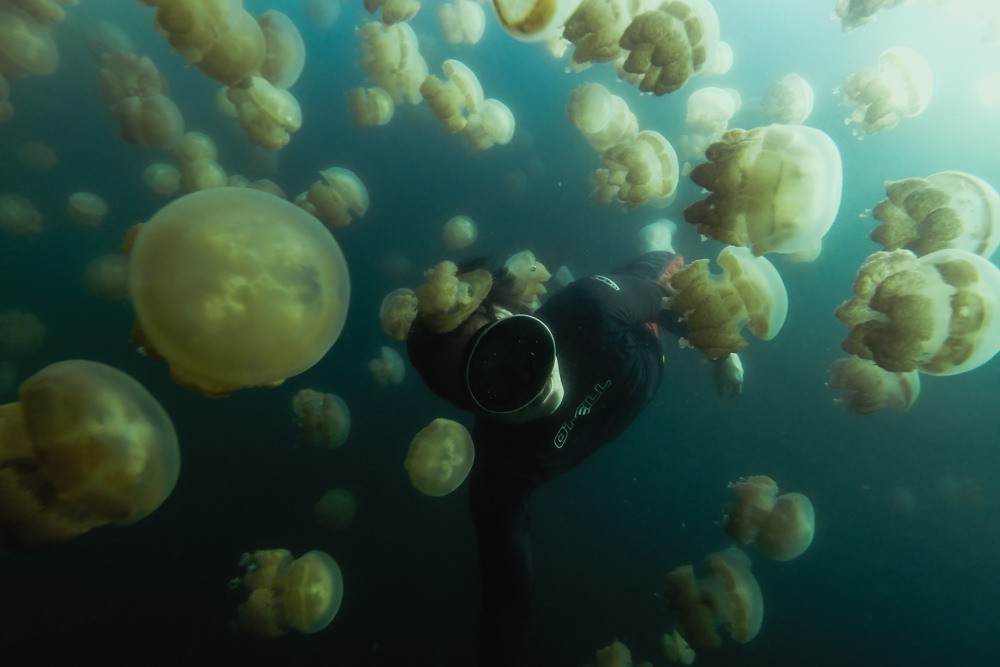
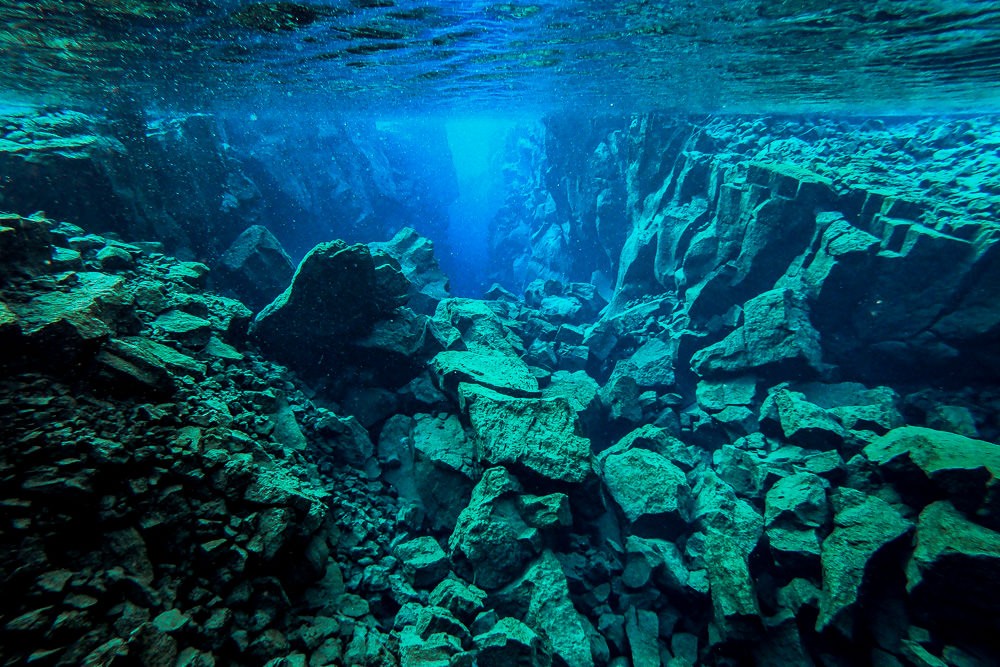

did you have to book the tour in advance? did you see anyone get turned away because they were full? Im planning a trip in June and the local tour guides are saying that they buy 1 day in advance, which makes me a bit nervous that we will get turned away
When did you visit Oslob? The fees are uniformed now for foreigners and locals for Php 500 each since the reopening after pandemic.
Thanks for the update!
Thank you for the detailed experience! We are about to visit this coming Sunday because of our 7 year old son who is fond of sharks! Reading this made us realized that we need a lot of preparation since we’re staying here in Mactan. More power ! We’ll be reading your articles.